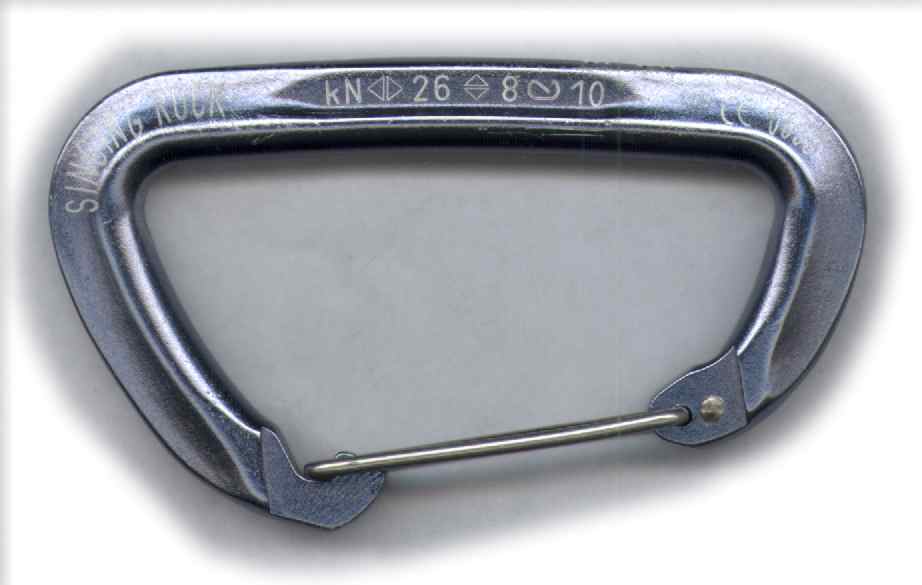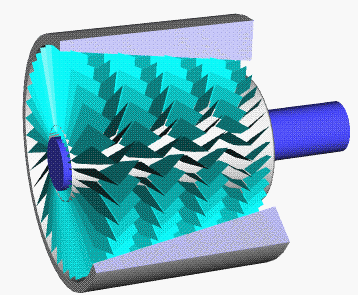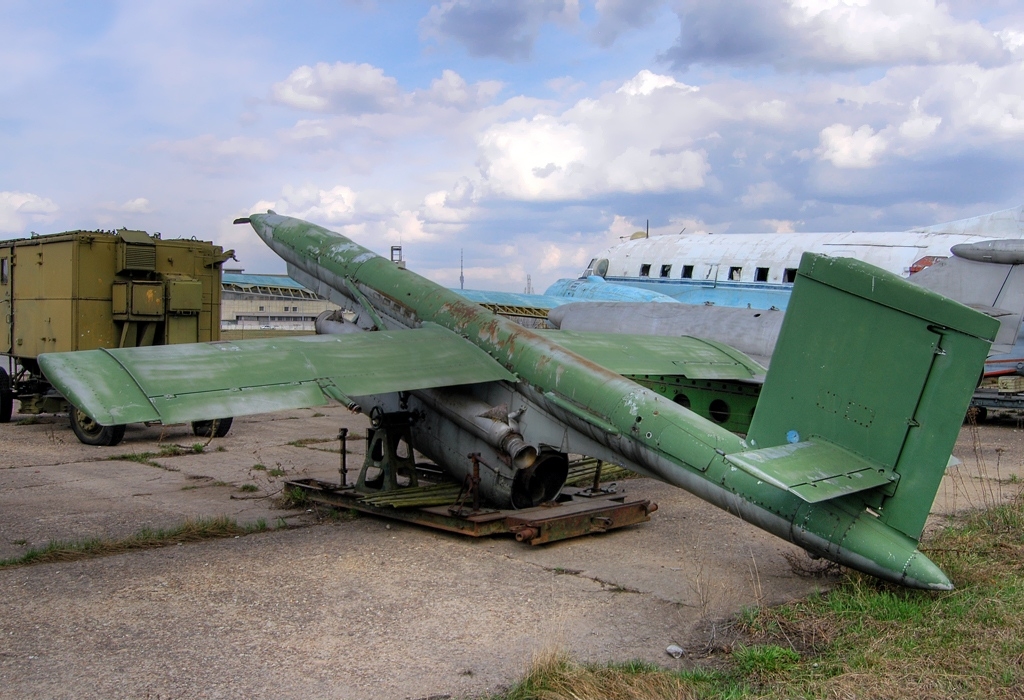|
Mikulin AM-5
The Tumansky RD-9 (initially designated Mikulin AM-5) was an early Soviet turbojet engine, not based on pre-existing German or British designs. The AM-5, developed by scaling down the AM-3, was available in 1952 and completed testing in 1953; it produced thrust without afterburner. The AM-5 engine is notable for making possible the first mass-produced supersonic interceptors such as the MiG-19, and the first Soviet all-weather area interceptor, the Yak-25. When Sergei Tumansky replaced Alexander Mikulin as the OKB-24's chief designer in 1956, the engine was renamed RD-9. The engine was later built under license in China as the WP-6. Variants and applications ;RD-9A: ;RD-9B: Used in the East German civilian jetliner project Baade 152 in 1958 and 1959, replaced when Pirna 014 engines became available. ;RD-9AK: Non-afterburning versions for the Yak-25 and Yak-26. ;RD-9AF-300: Afterburning version for the Yak-27 and Yak-28. ;RD-9AF2-300: Afterburning version for the Yak-27 and ... [...More Info...] [...Related Items...] OR: [Wikipedia] [Google] [Baidu] |
WikiProject Aircraft
A WikiProject, or Wikiproject, is an affinity group for contributors with shared goals within the Wikimedia movement. WikiProjects are prevalent within the largest wiki, Wikipedia, and exist to varying degrees within Wikimedia project, sibling projects such as Wiktionary, Wikiquote, Wikidata, and Wikisource. They also exist in different languages, and translation of articles is a form of their collaboration. During the COVID-19 pandemic, CBS News noted the role of Wikipedia's WikiProject Medicine in maintaining the accuracy of articles related to the disease. Another WikiProject that has drawn attention is WikiProject Women Scientists, which was profiled by ''Smithsonian Magazine, Smithsonian'' for its efforts to improve coverage of women scientists which the profile noted had "helped increase the number of female scientists on Wikipedia from around 1,600 to over 5,000". On Wikipedia Some Wikipedia WikiProjects are substantial enough to engage in cooperative activities with outsi ... [...More Info...] [...Related Items...] OR: [Wikipedia] [Google] [Baidu] |
Pirna 014
The Pirna 014 was an axial turbojet designed in East Germany (or the GDR) in the mid- to late 1950s by former Junkers engineers, who were repatriated to East Germany in 1954 after being held in custody in the Soviet Union following World War II. Origin After the remaining groups of German aircraft technology engineers, those which were not yet about to be repatriated back home, had been concentrated in Sawjelowo north of Moscow in December 1953, development planning for a four jet engine-powered civilian airliner started. The role of head of engine research & development was assigned to (then Dipl.-Ing.) Ferdinand Brandner, whereas (then Dipl.-Ing.) Brunolf Baade was given the general project lead. Before Brandner finally went back to his family in Austria, after being forced to stay in the Soviet Union for 9 years, he selected his deputy (then Dr.-Ing.) Rudolf Scheinost to continue his work and to lead development of the engine. The engine project ''014'', a continuation of ... [...More Info...] [...Related Items...] OR: [Wikipedia] [Google] [Baidu] |
General Electric J47
The General Electric J47 turbojet (GE company designation TG-190) was developed by General Electric from its earlier J35. It first flew in May 1948. The J47 was the first axial-flow turbojet approved for commercial use in the United States. It was used in many types of aircraft, and more than 30,000 were manufactured before production ceased in 1956. It saw continued service in the US military until 1978. Packard built 3,025 of the engines under license. The J47's greatest advantage, as advertised, was its array of features which were unavailable and unprecedented in any other engine. It was advertised as an 'all-weather engine' due to its anti-icing systems which allowed it to perform at high altitudes and extreme temperatures where other aircraft's performance suffered. Its development began without an explicit need for it, although this design was quickly purchased by the military for its many potential benefits. In 1978, J47s were formally withdrawn from active military d ... [...More Info...] [...Related Items...] OR: [Wikipedia] [Google] [Baidu] |
Allison J35
The General Electric/Allison J35 was the United States Air Force's first axial-flow (straight-through airflow) compressor jet engine. Originally developed by GE Aviation, General Electric (GE company designation TG-180) in parallel with the Frank Whittle, Whittle-based centrifugal compressor, centrifugal-flow Allison J33, J33, the J35 was a fairly simple turbojet, consisting of an eleven-stage axial-flow compressor and a single-stage turbine. With the afterburner, which most models carried, it produced a thrust of . Like the J33, the design of the J35 originated at General Electric, but major production was by the Allison Engine Company. Design and development While developing the General Electric T31, T31 axial turboprop in 1943 General Electric realized that they had the resources to design an axial flow turbojet at the same time as their centrifugal compressor, centrifugal-flow Allison J33, J33 engine. They recognized the axial would have more potential for the future and wen ... [...More Info...] [...Related Items...] OR: [Wikipedia] [Google] [Baidu] |
List Of Aircraft Engines
This is an alphabetical list of aircraft engines by manufacturer. 0–9 2si *2si 215 *2si 230 *Cuyuna 430, 2si 430 *2si 460 *2si 500 *2si 540 *2si 690 3W ''Source: RMV'' *3W 106iB2 *3W-110 *3W-112 *3W-170 *3W-210 *3W-220 A Abadal (Francisco Serramalera Abadal) *Abadal Y-12 350/400 hp ABC ''Source: Lumsden.'' * ABC 8 hp * ABC 30 hp V-4 * ABC 45 hp V-6 * ABC 60 hp V-8 * ABC 85 hp V-6 * ABC 100 hp V-8 * ABC 115 hp * ABC 170 hp V-12 * ABC 225 hp V-16 *ABC Dragonfly *ABC Gadfly *ABC Gnat *ABC Hornet *ABC Mosquito *ABC Scorpion *ABC Wasp *ABC type 10 APU *ABC type 11 APU ABECO ''Source: RMV'' *ABECO GEM Aberg ''Source: RMV'' *Type Sklenar ABLE ''Source: RMV'', Able Experimental Aircraft Engine Co. (Able Experimental Aircraft Engine Co., Altimizer, Hoverhawk (US)) *ABLE 2275 *ABLE 2500 *ABLE VW x 2 Geared Drive Accurate Automation Corp *Accurate Automation AT-1500 *Accurate Automation AT-1700 Ace (Ace Amer ... [...More Info...] [...Related Items...] OR: [Wikipedia] [Google] [Baidu] |
Newton (unit)
The newton (symbol: N) is the unit of force in the International System of Units (SI). Expressed in terms of SI base units, it is 1 kg⋅m/s2, the force that accelerates a mass of one kilogram at one metre per second squared. The unit is named after Isaac Newton in recognition of his work on classical mechanics, specifically his second law of motion. Definition A newton is defined as 1 kg⋅m/s2 (it is a named derived unit defined in terms of the SI base units). One newton is, therefore, the force needed to accelerate one kilogram of mass at the rate of one metre per second squared in the direction of the applied force. The units "metre per second squared" can be understood as measuring a rate of change in velocity per unit of time, i.e. an increase in velocity by one metre per second every second. In 1946, the General Conference on Weights and Measures (CGPM) Resolution 2 standardized the unit of force in the MKS system of units to be the amount need ... [...More Info...] [...Related Items...] OR: [Wikipedia] [Google] [Baidu] |
Axial Compressor
An axial compressor is a gas compressor that can continuously pressurize gases. It is a rotating, airfoil-based compressor in which the gas or working fluid principally flows parallel to the axis of rotation, or axially. This differs from other rotating compressors such as centrifugal compressor, axi-centrifugal compressors and mixed-flow compressors where the fluid flow will include a "radial component" through the compressor. The energy level of the fluid increases as it flows through the compressor due to the action of the rotor blades which exert a torque on the fluid. The stationary blades slow the fluid, converting the circumferential component of flow into pressure. Compressors are typically driven by an electric motor or a steam or a gas turbine. Axial flow compressors produce a continuous flow of compressed gas, and have the benefits of high efficiency and large mass flow rate, particularly in relation to their size and cross-section. They do, however, require several ... [...More Info...] [...Related Items...] OR: [Wikipedia] [Google] [Baidu] |
Nanchang J-12
The Nanchang J-12 ( Chinese: 歼-12) was a lightweight supersonic fighter built by the People's Republic of China, intended for use by the People's Liberation Army Air Force (PLAAF). Intended to be a modern jet fighter which could take off from short runways and even rural roads, be cheap to service, and be produced quickly in large numbers, it was ultimately determined to be inadequate for modern warfare. Weighing empty, the J-12 is one of the lightest jet fighters ever built. However, neither the J-12 nor the related Shenyang J-13 project entered service. Design and development In 1969, the PLAAF issued an order to build a small, inexpensive, STOL (short takeoff and landing) lightweight fighter in order to replace the MiG-19. Two designs were submitted, namely the Shenyang J-11 and the Nanchang J-12. Prototypes of the J-12 were designed by Lu Xiaopeng and built by the Nanchang Aircraft Manufacturing Company (NAMC). The J-12 was a small single-seat jet fighter with low-se ... [...More Info...] [...Related Items...] OR: [Wikipedia] [Google] [Baidu] |
Nanchang Q-5
The Nanchang Q-5 (; NATO reporting name: Fan-Tan, Fantan), also known as the A-5 in its export versions, is a 1960s-design Chinese-built single-seat, twin jet engine ground-attack aircraft based on the Shenyang J-6. The aircraft is primarily used for close air support. Design and development The PRC was an enthusiastic user of the MiG-19, which it manufactured locally as the Shenyang J-6 from 1958. In August 1958, the People's Liberation Army requested development of a jet attack aircraft for the air support role. Lu Xiaopeng was appointed chief designer of this project. Lu also designed the Nanchang J-12, J-12 fighter jet. Although based on the MiG-19, the new design, designated Qiangjiji-5 (fifth attack aircraft design), had a longer fuselage, area ruled to reduce transonic drag and accommodate a 4 m (13-ft) long internal weapons bay. The air intakes were moved to the fuselage sides to make space in the nose for a planned target radar (which was never actually fitted). N ... [...More Info...] [...Related Items...] OR: [Wikipedia] [Google] [Baidu] |
Shenyang J-6
The Shenyang J-6 (wikt:歼, Chinese: 歼-6; designated F-6 for export versions; NATO reporting name: Farmer) is the Chinese version of the Soviet Mikoyan-Gurevich MiG-19, MiG-19 'Farmer' fighter, the world's first mass-produced supersonic aircraft. Design and development Although the MiG-19 had a comparatively short life in Soviet service, the Chinese came to value its agility, turning performance, and powerful cannon armament, and produced it for their own use between 1958 and 1981. While the basic Soviet-built MiG-19 has been retired from all nations, the Shenyang J-6 still flies for nine of its original 15 operators, however, in a very limited capacity. The J-6 airframe contributed to the Chinese ground attack version, the Nanchang Q-5, Q-5, which still flies for numerous nations. The J-6 was considered "disposable" and was intended to be operated for only 100 flight hours (or approximately 100 sorties) before being overhauled. The Pakistan Air Force was often able to ex ... [...More Info...] [...Related Items...] OR: [Wikipedia] [Google] [Baidu] |
Ilyushin Il-40
The Ilyushin Il-40 (NATO reporting name: Brawny) was a two-seat Soviet jet-engined armored ground-attack aircraft. The first prototype flew in 1953 and was very successful except when it fired its guns, as their combustion gasses disturbed the airflow into the engines and caused them to flameout or hiccup. Remedying this problem took over a year and involved the radical change of moving the engine air intakes all the way to the very front of the aircraft and repositioning the guns from the tip of the nose to the bottom of the fuselage, just behind the nosewheel. The aircraft, now resembling a double-barreled shotgun from the front, was ordered into production in 1955. Only five production aircraft had been completed before the entire program was canceled in early 1956 when the VVS discarded its close air-support doctrine in favor of tactical nuclear weapons on the battlefield. Development Sergey Ilyushin had begun design studies during 1950–51 for a jet-engined ground-attac ... [...More Info...] [...Related Items...] OR: [Wikipedia] [Google] [Baidu] |
Lavochkin La-17
The Lavochkin La-17 was the first Soviet Union, Soviet unmanned aerial vehicle (UAV) to reach operational service. The first versions were developed in the early 1950s, and remained in service into the 1980s. Early development The La-17 was designed by the Lavochkin design bureau, with work beginning in 1950. Flight tests began in 1953, with prototype drones carried on a Tupolev Tu-4 four-engine bomber. La-17 production began in 1956. The La-17 was a jet drone of all-metal construction, with straight flight surfaces, and a jet engine carried in a nacelle under the fuselage. The initial variant, which was just known as the "La-17", was air-launched. and powered by a Bondaryuk RD-900 ramjet with 800 kgf (1,760 lbf) thrust. There was a "windmill" type electric generator in the nose, somewhat along the lines of the WW II-era Luftwaffe's Me 163 manned rocket interceptor to provide electric power. The La-17 was directed by radio control and simply "bellied in" to land, with t ... [...More Info...] [...Related Items...] OR: [Wikipedia] [Google] [Baidu] |







